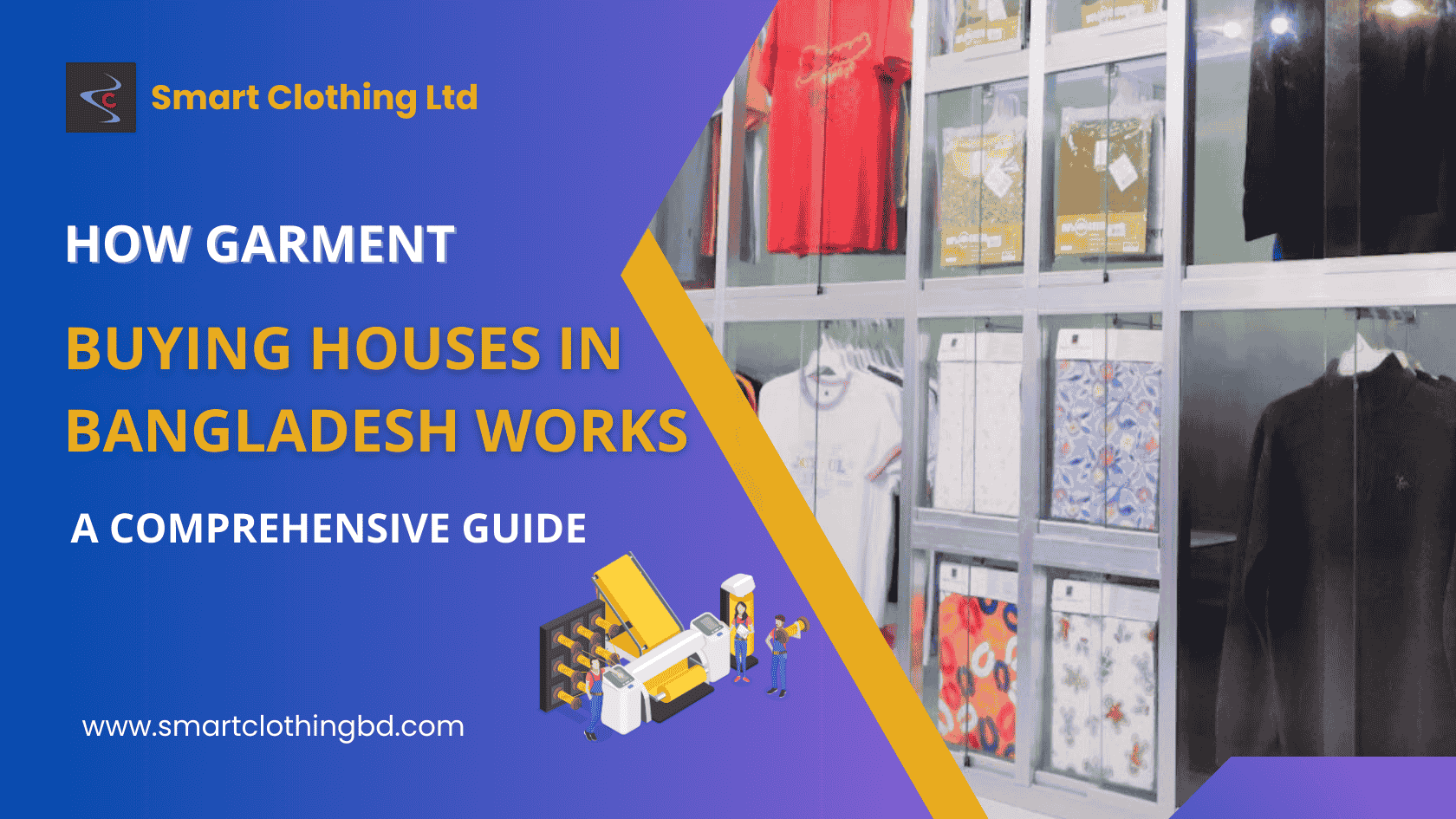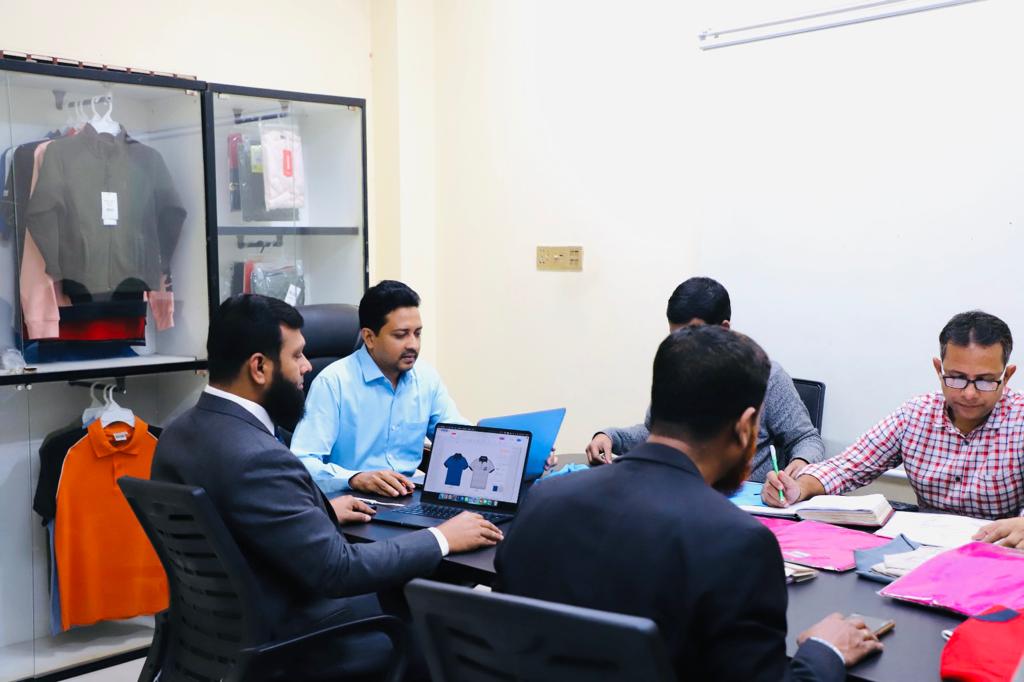
Bangladesh has firmly established itself as the second-largest exporter in the global Ready-Made Garments (RMG) industry, following China. But how does this country manage to meet the ever-growing demands of international buyers while maintaining quality, compliance, and affordability? The answer lies in the pivotal role of Garment Buying Houses in Bangladesh, which act as the vital link between international markets and local manufacturers.
These buying houses streamline the complex garment production process, ensuring the smooth journey of apparel from factory floors in Dhaka, Chittagong, and other hubs to retailers across the globe.
In this blog, we’ll dive deep into the functions, operations, and contributions of garment buying houses, equipping you with insights into their indispensable role in the global apparel supply chain.
What is a Garment Buying House?
A garment buying house is much more than an intermediary. Think of it as a project manager, quality controller, and logistics expert combined into one entity.
Definition:
A garment buying house connects international buyers with local garment manufacturers in Bangladesh. They oversee everything, from understanding buyer requirements to ensuring the final shipment meets the highest quality standards.
Let’s break this down further:
- Why Buyers Need Buying Houses:
Imagine you’re an international retailer looking to source T-shirts in bulk. How do you identify the right manufacturer, ensure the fabric and stitching quality, and handle shipping logistics? That’s where apparel buying houses step in—they manage these responsibilities seamlessly. - Why Manufacturers Rely on Buying Houses:
For a local garment manufacturer, handling diverse buyers’ requirements can be challenging. Buying houses bridge these gaps, ensuring manufacturers understand and deliver what overseas buyers want.
The Workflow of a Garment Buying House
To truly grasp the role of apparel buying house, let’s walk through its workflow:
1. Understanding Buyer Needs
The first step is detailed communication with buyers to understand their product specifications, order volume, and delivery timelines. Buying houses often work with tech packs, which outline garment details like fabric type, measurements, color codes, and packaging preferences.
Key Tasks:
- Reviewing buyer-provided tech packs.
- Clarifying doubts to avoid miscommunication.
- Aligning on pricing and production schedules.
2. Sourcing the Right Manufacturer
In a market teeming with garment factories, how do buyers ensure they work with compliant and reliable oem manufacturers? Buying houses curate a network of vetted factories based on:
- Their production capabilities.
- Compliance with international labor laws.
- Previous performance and reputation.
Example:
If a buyer requires 10,000 hoodies with sustainable fabric, the buying house identifies a factory specializing in eco-friendly materials and bulk production.
3. Sample Development
Once a factory is selected, the buying house oversees the creation of development samples. These samples act as prototypes, showcasing what the final product will look like.
Important Elements:
- Ensuring samples match buyer specifications.
- Making necessary adjustments based on buyer feedback.
- Avoiding production delays by finalizing designs early.
4. Order Management
After sample approval, the bulk production process begins. Buying houses play a key role in monitoring:
- Raw material sourcing.
- Production timelines.
- Coordination between multiple factories (if needed).
Why This Matters:
Timely communication ensures that every stage of production aligns with buyer expectations, preventing costly errors.
5. Quality Assurance
Quality is non-negotiable in the garment business. Buying houses conduct rigorous inspections at various stages:
- In-line Inspection: During production to spot defects early.
- Pre-shipment Inspection: Ensuring finished goods meet standards.
6. Logistics and Delivery
Finally, buying houses manage the shipment of goods (depending on the contract or pricing), ensuring they’re delivered on time. They handle or help to get documentation like bills of lading, export permits, and compliance certifications, making the process hassle-free for buyers.
The Importance of Buying Houses in Bangladesh
- Global Market Access:
Buying houses are the gateway for international brands looking to leverage Bangladesh’s cost-effective manufacturing capabilities. Buying houses plays a key role in Bangladesh’s RMG Industry. - Compliance Expertise:
From child labor laws to fire safety, buying houses ensure that manufacturers meet stringent global standards. - Streamlined Operations:
By coordinating between buyers and suppliers, buying houses simplify the supply chain, saving both parties time and effort.
Challenges Buying Houses Face
Despite their contributions, Garment buying houses in Bangladesh encounter challenges that require strategic solutions:
- Evolving Compliance Requirements:
Adapting to stricter global regulations on sustainability and labor rights. - Port Congestion:
Shipping delays due to congested ports can disrupt delivery schedules. - Balancing Cost and Quality:
Meeting buyer demands for competitive pricing without compromising quality remains a constant challenge.
Why Choose Bangladesh for Garment Buying Houses?

- Affordability:
Bangladesh offers some of the most competitive production costs in the world without compromising on quality. - Skilled Workforce:
The country boasts a workforce well-versed in garment manufacturing techniques. - Proximity to Raw Materials:
With a strong textile base, sourcing fabrics and accessories is easier and faster in Bangladesh.
Conclusion
Garment buying houses in Bangladesh are indispensable to the global apparel industry. They not only bridge the gap between international buyers and local suppliers but also ensure the smooth flow of high-quality garments from design to delivery.
Whether you’re a budding fashion entrepreneur or a retail giant, partnering with a reputed buying house can transform your sourcing strategy, guaranteeing products that meet market demands while staying competitive in price.
Ready to explore opportunities with Bangladesh’s top buying houses? Smart Clothing Ltd. is your trusted partner for all your garment sourcing needs.